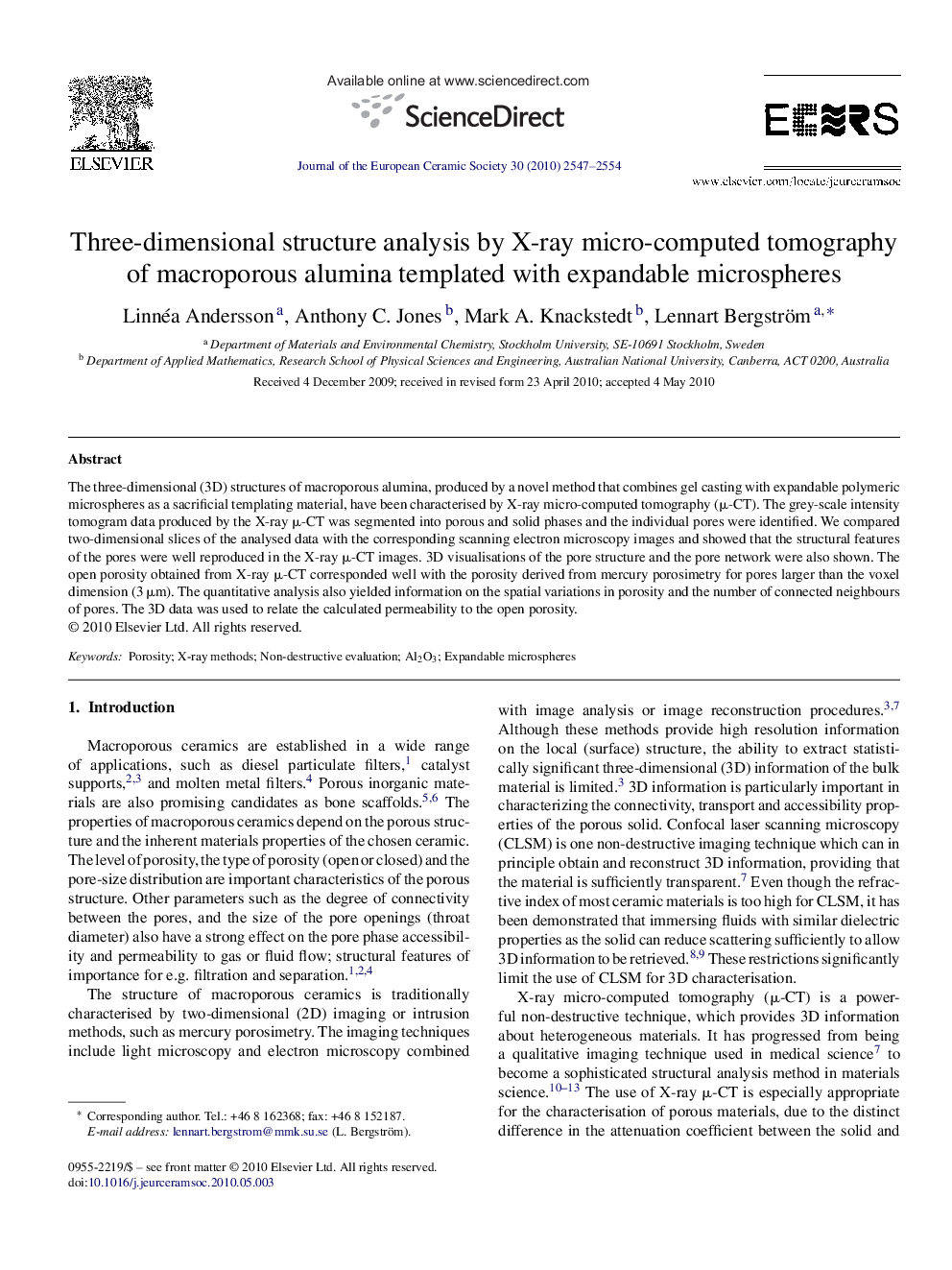| Article ID | Journal | Published Year | Pages | File Type |
|---|---|---|---|---|
| 1476635 | Journal of the European Ceramic Society | 2010 | 8 Pages |
The three-dimensional (3D) structures of macroporous alumina, produced by a novel method that combines gel casting with expandable polymeric microspheres as a sacrificial templating material, have been characterised by X-ray micro-computed tomography (μ-CT). The grey-scale intensity tomogram data produced by the X-ray μ-CT was segmented into porous and solid phases and the individual pores were identified. We compared two-dimensional slices of the analysed data with the corresponding scanning electron microscopy images and showed that the structural features of the pores were well reproduced in the X-ray μ-CT images. 3D visualisations of the pore structure and the pore network were also shown. The open porosity obtained from X-ray μ-CT corresponded well with the porosity derived from mercury porosimetry for pores larger than the voxel dimension (3 μm). The quantitative analysis also yielded information on the spatial variations in porosity and the number of connected neighbours of pores. The 3D data was used to relate the calculated permeability to the open porosity.
